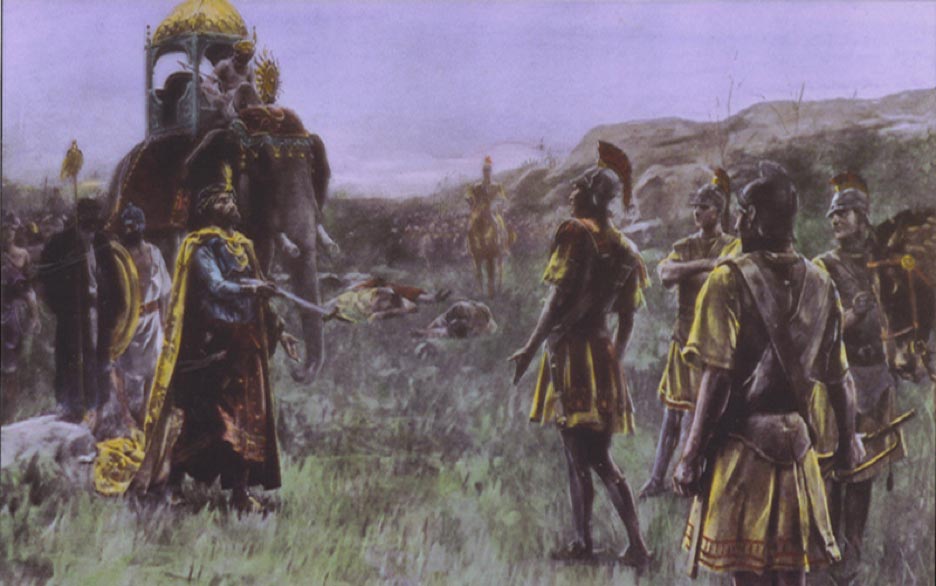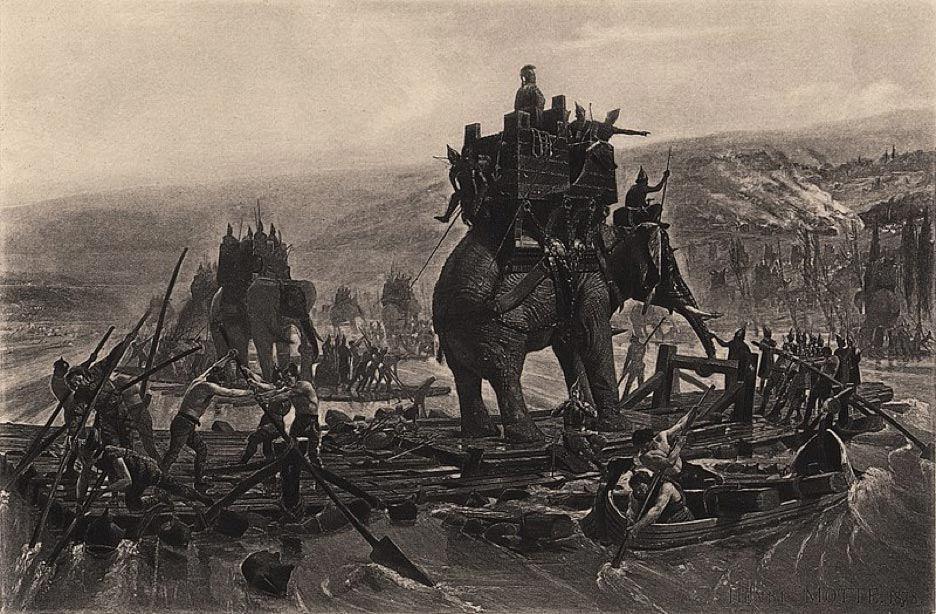
The Enigma of the Origins of the Borneo Elephants
Through history, at least 32 elephant species have existed on planet earth, some became extinct as early as the Miocene epoch (23.03 to 5.333 million years ago), but most species were exterminated by man. Since Homo Sapiens migrated out of Africa about 100,000 years ago many species of mega fauna were wiped out. About 40,000 years ago Homo Sapiens migrated into Europe and was directly responsible for wiping out 23 genera or 59% of the mega fauna including the European elephants. Approximately 15,000 years ago humans killed off 45 genera or 74 % of mega fauna in North America, including all North American elephants. Crossing the Beringia Strait they missed Wrangler Island but eventually Homo Sapiens landed on Wrangler Island about 5,000 years ago and 3,500 years ago the last mammoths were hunted to extinction.

Wooly mammoths near the Somme River by Charles R. Knight, (Public Domain)
Man and elephant share a long history together. The oldest evidence of tame elephants originates from the Indus valley civilization at around 4500 BC. Elephants were used by man for transport, war, agricultural, domestic work and entertainment. After returning from his triumphant campaigns in 79BC Pompey killed at least 20 elephants to entertain his fellow Romans. On another account 3,500 elephants were killed in the Roman circus during the reign of Augustus. Alexander the Great, Hannibal, the Mughals and ancient Egyptians all used elephants for warfare. Hannibal used elephants from Africa and Syria to cross the Alps in 218 BC. The Roman elephants originated from Africa, Asia and India.
Ancient Transportation of Elephants by Sea
The question arises, how did ancient man transport these elephants? It is well known that elephants can walk long distances. Provided food and water, elephants travelled from India to Europe. After his last big battle against Porus, Alexander the Great took elephants back to Europe.

Alexander accepts the surrender of Porus by Andre Castaigne (1898-1899) (Public Domain)
For the ancient people it was a huge challenge to build ships that could transport elephants across oceans. Snerfo (4th Dynasty Egypt) built a hundred cubit ships in 2600 BC to transport 7,000 prisoners and 200,000 cattle from the land of the Negro (Sudan). It is likely that these ships could transport elephants on the calm and slow flowing Nile. During the second millennium BC obelisks weighing 300 tons were transported from Aswan to Giza on the Nile. Ptolemy II (283 – 246 BC) was probably the first documented leader who transported elephants by sea. He established ports along the Red Sea for this purpose. The ports of Ptolemais Theron and Bernice Troglodytica had specially built docks and ramps to facilitate elephants.
The elephants that Ptolemy II transported were a separate subspecies (Loxodonto Africana pharaohensis) of the African elephant that occurred north of the Saharan desert. They were smaller and apparently easier to tame than the rest of Africa’s elephants. This was also the same elephant subspecies that Hannibal used on his epic Alpine crossing. However, Hannibal’s personal elephant, Surus was a Syrian elephant (Elephas maximus asurus) which was much larger and roamed from Iran to Syria. Both these elephant subspecies became extinct in about 100 BC due to over exploitation by man.





